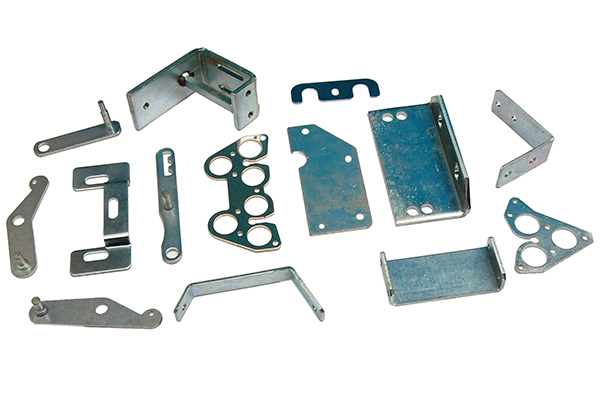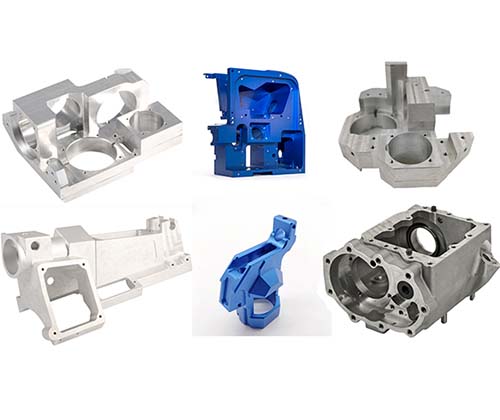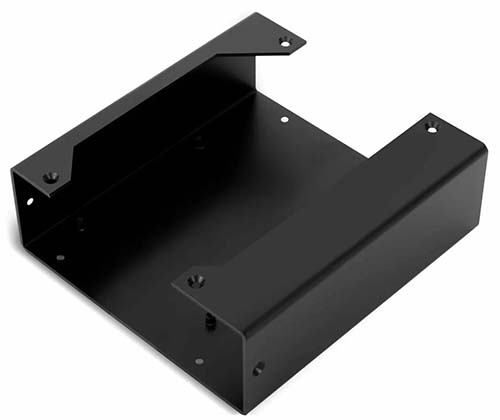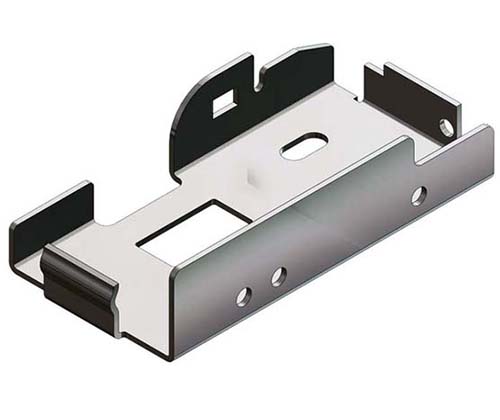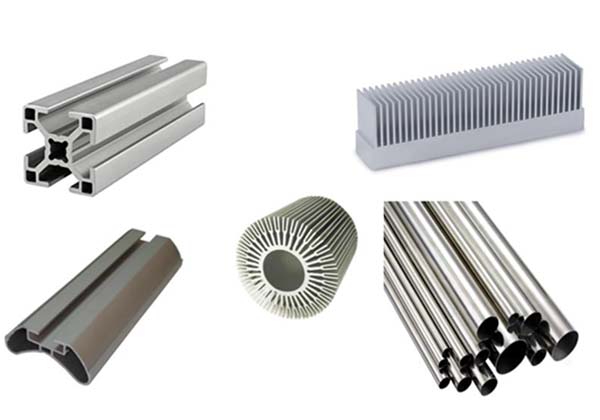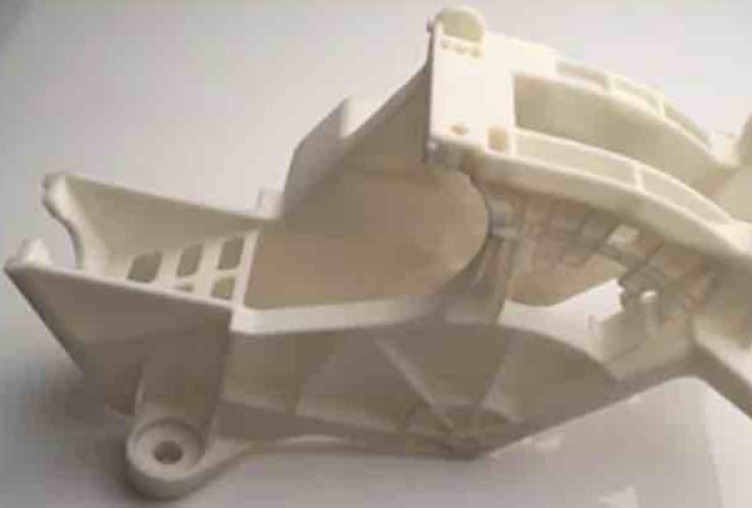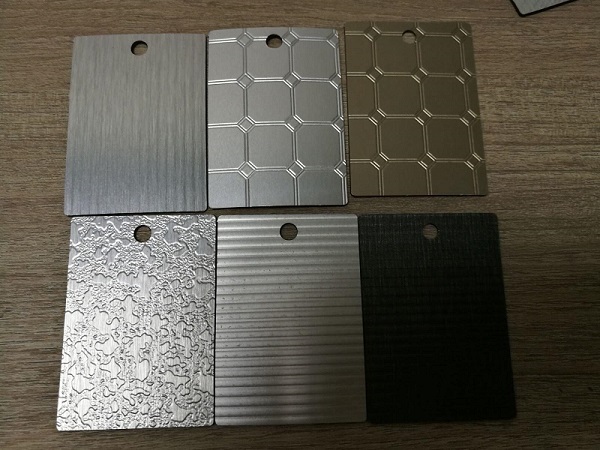What is Custom Sheet Metal Fabrication?
Custom sheet metal fabrication is a manufacturing process that involves transforming flat sheets of metal into custom - designed components or products. This process can work with a variety of metals, such as steel, aluminum, stainless steel, and copper. The sheets typically range in thickness from thin foils to relatively thick plates, and the fabrication techniques are tailored to meet specific design requirements.
The Process
The process usually starts with a design phase. Engineers or designers create detailed blueprints or 3D models of the desired part. These designs are then translated into instructions for the fabrication equipment.
Cutting is often the first step in the physical fabrication process. There are several methods for cutting sheet metal, with laser cutting being one of the most precise. Laser cutting can create complex shapes with clean edges, and it is suitable for a wide range of metal thicknesses. For example, in the production of small, intricate electronic components, laser - cut sheet metal can provide the necessary accuracy. Punching is another common cutting method, especially for creating holes or simple shapes in large - volume production.
Bending is used to give the sheet metal its three - dimensional form. Press brakes are commonly employed to bend the metal at specific angles. The bending process requires careful consideration of the metal's properties, such as its ductility, to avoid cracking or other defects.
Welding is often necessary to join multiple pieces of sheet metal together. Different welding techniques, like MIG (Metal Inert Gas) and TIG (Tungsten Inert Gas) welding, are used depending on the type of metal and the quality requirements of the joint. For instance, TIG welding is preferred for high - quality, precision welds in stainless steel or aluminum components.
Applications
Custom sheet metal fabrication has a wide range of applications across various industries:
- Automotive Industry: Sheet metal is used to make car bodies, engine components, and interior parts. For example, car doors, hoods, and fenders are often made from stamped and formed sheet metal. The use of lightweight aluminum sheet metal in modern cars helps to improve fuel efficiency without sacrificing strength.
- Aerospace Industry: In aerospace, precision - fabricated sheet metal parts are used in aircraft structures, engine components, and interior fittings. The high - strength and lightweight properties of metals like titanium and aluminum make them ideal for aerospace applications. For example, aircraft wings often contain complex sheet metal structures that are carefully designed to withstand the stresses of flight.
- Medical Equipment: Many medical devices, such as surgical tables, imaging equipment enclosures, and patient monitors, are made using custom sheet metal fabrication. The need for hygienic, corrosion - resistant, and precisely - shaped components makes sheet metal an excellent choice. For instance, the enclosures for MRI machines are often made from sheet metal to protect the sensitive internal components.
- Electronics: Sheet metal is used to make enclosures for computers, servers, and other electronic devices. These enclosures provide protection against electromagnetic interference (EMI) and physical damage. For example, the chassis of a desktop computer is typically made from sheet metal.
Key Elements in Custom Sheet Metal Fabrication Online
Materials Selection
The choice of materials in custom sheet metal fabrication is crucial as it directly impacts the performance, durability, and cost of the final product. Here are some common materials and their characteristics:
- Carbon Steel: Carbon steel is widely used due to its relatively low cost and good strength. It contains iron and carbon, with carbon content typically ranging from 0.05% to 2.1%. Low - carbon steel (carbon content less than 0.3%) is highly formable and weldable, making it suitable for applications where complex shapes are required, such as in automotive body panels and general - purpose machinery parts. Medium - carbon steel (0.3% - 0.6% carbon) offers a balance of strength and toughness, often used in shafts, gears, and structural components. High - carbon steel (more than 0.6% carbon) is very strong and hard but less ductile, commonly used for springs, cutting tools, and high - wear - resistance parts. However, carbon steel is prone to rusting and may require proper surface protection like painting, galvanizing, or plating.
- Stainless Steel: Stainless steel is known for its excellent corrosion resistance, which is achieved by adding chromium (usually at least 10.5%) and sometimes other elements like nickel, molybdenum, etc. Austenitic stainless steels, such as 304 and 316, are non - magnetic and have high corrosion resistance in a variety of environments. Type 304 is a general - purpose stainless steel used in food processing equipment, kitchenware, and architectural applications. Type 316, with the addition of molybdenum, offers enhanced resistance to chloride corrosion, making it ideal for marine and chemical processing applications. Ferritic stainless steels are magnetic and have good corrosion resistance at a relatively lower cost, often used in automotive exhaust systems and some architectural trims. Martensitic stainless steels can be heat - treated to achieve high strength and hardness, suitable for applications like knife blades and turbine components.
- Aluminum Alloy: Aluminum alloys are popular for their lightweight nature, high strength - to - weight ratio, and good corrosion resistance. They are widely used in the aerospace, automotive, and electronics industries. For example, 6061 aluminum alloy, which contains magnesium and silicon, is heat - treatable and has good machinability, weldability, and corrosion resistance. It is commonly used in aircraft structures, automotive parts like engine blocks and wheels, and electronic device enclosures. 5052 aluminum alloy, with a relatively high magnesium content, has excellent corrosion resistance and formability, often used in marine applications, fuel tanks, and sheet metal parts that require deep drawing.
Fabrication Processes
- Cutting:
- Laser Cutting: Laser cutting uses a high - power laser beam to melt, burn, or vaporize the metal. It offers high precision, capable of achieving tolerances as low as ±0.1mm. This method can cut complex shapes with smooth edges and is suitable for a wide range of sheet metal thicknesses, from thin foils to relatively thick plates up to about 25mm for some materials like mild steel. For instance, in the production of small, intricate electronic components, laser - cut sheet metal can provide the necessary accuracy.
- Plasma Cutting: Plasma cutting creates a high - temperature plasma arc (up to 30,000°F) to melt and eject the metal. It is faster than laser cutting for thicker materials (up to 100mm or more for some metals) and is more cost - effective for large - scale cutting of metals like stainless steel and aluminum. However, the cut edges may have a slightly rougher finish compared to laser cutting, with a typical tolerance of ±0.5mm.
- Shearing: Shearing uses a mechanical force to cut the sheet metal by applying a shear stress along a straight line. It is a fast and cost - effective method for straight cuts, especially for large - volume production of simple shapes. Shearing is commonly used in the initial stage of processing large sheets of metal into smaller, more manageable pieces.
- Bending:
- Press brakes are the most common equipment for bending sheet metal. The operator sets the bending angle, punch and die selection according to the design requirements. For example, when bending a 1mm - thick stainless - steel sheet to a 90 - degree angle, the appropriate punch and die with a suitable radius need to be chosen to prevent cracking. The bending process also requires considering the spring - back effect of the metal. Spring - back is the tendency of the metal to return slightly to its original shape after bending. Manufacturers often compensate for spring - back by over - bending the metal slightly or using post - bending processes like annealing to relieve internal stresses.
- Welding:
- MIG (Metal Inert Gas) Welding: MIG welding uses a consumable wire electrode and an inert gas (such as argon) to protect the weld area from oxidation. It is a fast and efficient welding method, suitable for welding various metals including carbon steel, stainless steel, and aluminum. MIG welding can achieve high deposition rates, making it ideal for joining thick - walled sheet metal parts or for high - volume production.
- TIG (Tungsten Inert Gas) Welding: TIG welding uses a non - consumable tungsten electrode and an inert gas for shielding. It provides precise control over the weld pool, resulting in high - quality, aesthetically pleasing welds. TIG welding is often preferred for welding thin - walled sheet metal, high - quality stainless - steel components, and aluminum parts where a clean and precise weld is required. However, it is a slower process compared to MIG welding and requires more skilled operators.
- Surface Treatment:
- Painting: Painting is a common surface treatment to protect the sheet metal from corrosion and provide an aesthetic finish. There are various types of paints available, such as epoxy paint for high - durability industrial applications, powder coating for a thick and durable finish with a wide range of color options, and automotive - grade paint for a smooth and glossy appearance.
- Anodizing: Anodizing is mainly used for aluminum alloys. It creates a thick, protective oxide layer on the surface of the aluminum, enhancing its corrosion resistance, hardness, and ability to accept dyes for color customization. Anodized aluminum is often used in architectural applications, consumer electronics, and automotive trim parts.
- Galvanizing: Galvanizing involves coating the sheet metal (usually carbon steel) with a layer of zinc to prevent rusting. Hot - dip galvanizing, where the metal is dipped in a bath of molten zinc, provides a thick and long - lasting protective layer, commonly used in outdoor structural components like fences, poles, and roofing materials.
Yigu Technology's Perspective
As a non - standard plastic metal products custom supplier, Yigu Technology deeply understands the significance of custom sheet metal fabrication. In our experience, precision is the key in this field. Our advanced equipment and skilled technicians enable us to handle complex sheet metal projects with ease.
We pride ourselves on our ability to offer a wide range of services. From the initial design consultation, where we work closely with clients to understand their unique requirements, to the final product delivery, we ensure a seamless process. Our materials inventory is diverse, allowing us to provide solutions using various metals according to clients' needs.
Moreover, we focus on quality control. Each fabricated sheet metal part undergoes strict inspections to meet international standards. We also emphasize on - time delivery, knowing that it is crucial for our clients' production schedules. Our customer - centric approach and commitment to innovation make us a reliable partner in the custom sheet metal fabrication industry.
FAQ
Q1: How do I ensure the quality of custom sheet metal products ordered online?
- Check Supplier Qualifications: Look for suppliers with certifications like ISO 9001. This indicates they follow strict quality management systems, from raw material procurement to the final product inspection. For example, a supplier with this certification is likely to have regular quality audits and employee training programs to maintain high - quality standards.
- Monitor the Production Process: Some suppliers offer live - streaming or regular updates of the production process. You can also ask for detailed reports on the manufacturing steps, including the equipment used for cutting, bending, and welding. For instance, if laser cutting is involved, knowing the type of laser machine and its maintenance records can give you an idea of the precision and quality of the cuts.
- Set Clear Acceptance criteria: Define your own quality requirements clearly in the order, such as dimensional tolerances, surface finish roughness, and weld quality standards. Request that the supplier provide inspection reports based on these standards, and consider third - party inspection services if necessary.
Q2: What if I need to make changes to my design after placing the order?
- Contact the Supplier Immediately: As soon as you realize the need for a design change, get in touch with the supplier's customer service or project manager. The earlier you communicate the change, the more likely it can be incorporated without significant issues.
- Understand the Process: The supplier will typically review the proposed changes to assess their impact on the production process. This may involve checking if the new design is still manufacturable with the existing equipment and materials. If the changes are minor, like adjusting a hole's diameter slightly, it may be a simple process. However, major changes, such as altering the overall shape of the sheet metal part, could require re - engineering the production process.
- Be Aware of the Impact: Design changes may result in additional costs, especially if new materials need to be ordered or if the production schedule is disrupted. There may also be a delay in the delivery time, so be prepared to discuss these aspects with the supplier and adjust your plans accordingly.
Q3: How long does it usually take to receive the custom sheet metal products?
- Production Time: The production time for custom sheet metal products can vary widely depending on the complexity of the design, the quantity ordered, and the supplier's workload. For a simple, small - batch order (e.g., 10 - 50 pieces of a basic sheet metal enclosure), it may take 1 - 2 weeks. However, for complex, high - precision parts with a large order quantity (e.g., 500 - 1000 pieces of aerospace - grade components), the production time could be 4 - 8 weeks or even longer.
- Shipping Time: Shipping time depends on the shipping method and the destination. For domestic shipping within the same country, ground shipping may take 1 - 5 days, while express shipping can be as fast as 1 - 2 days. For international shipping, it can take anywhere from 1 - 3 weeks by sea freight and 3 - 7 days by air freight, considering factors like customs clearance and distance.
